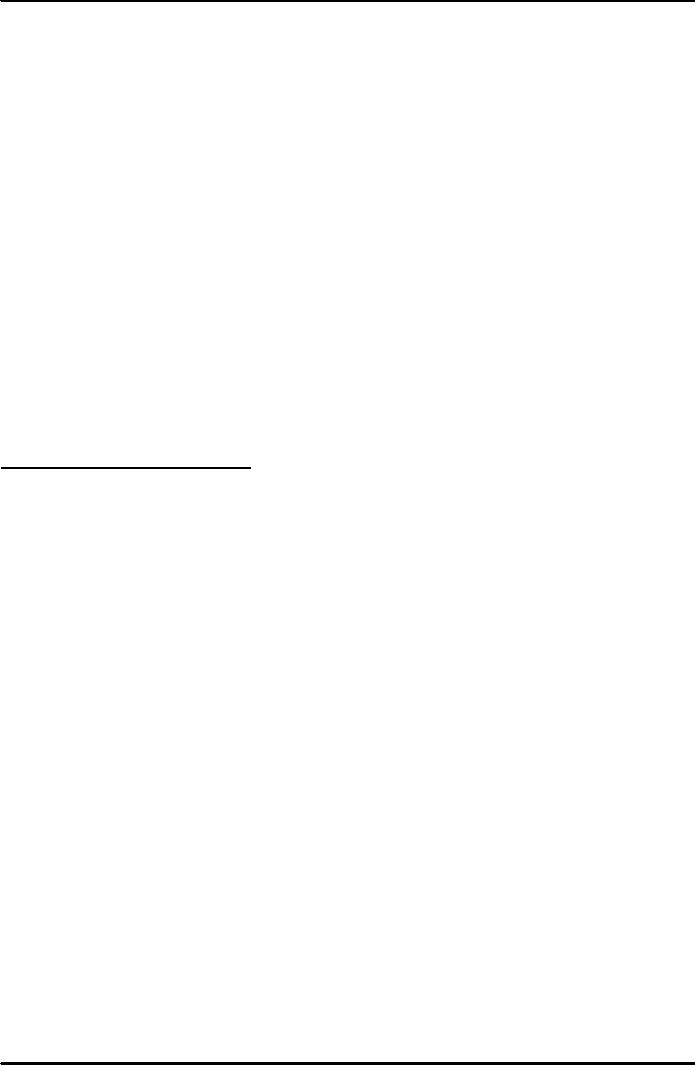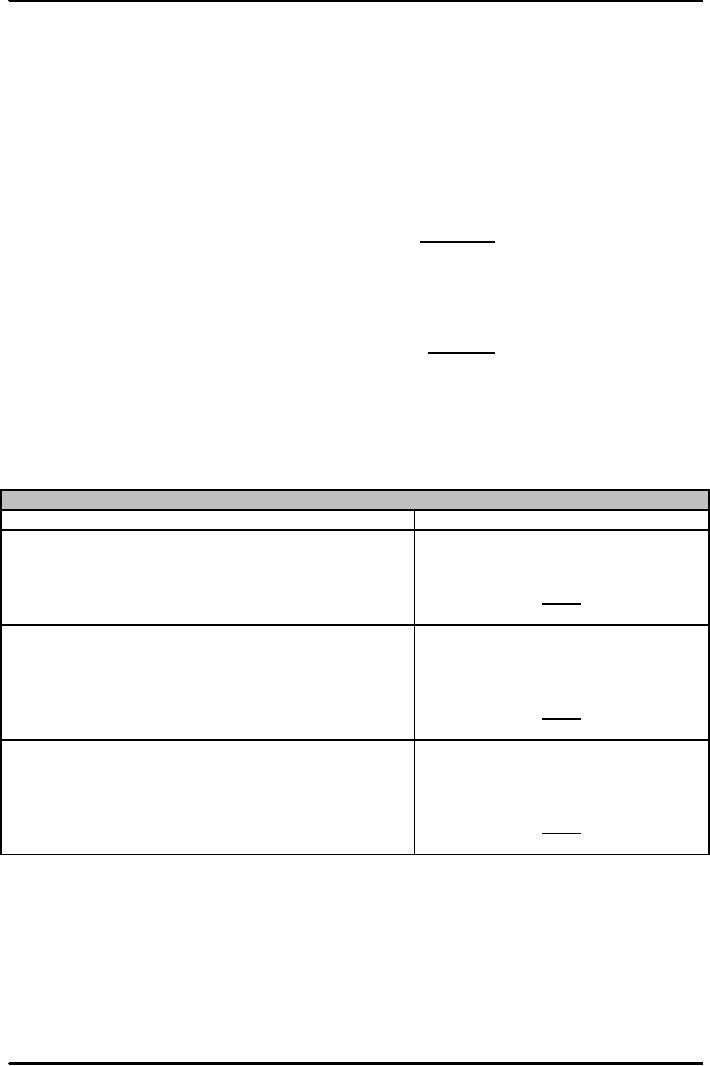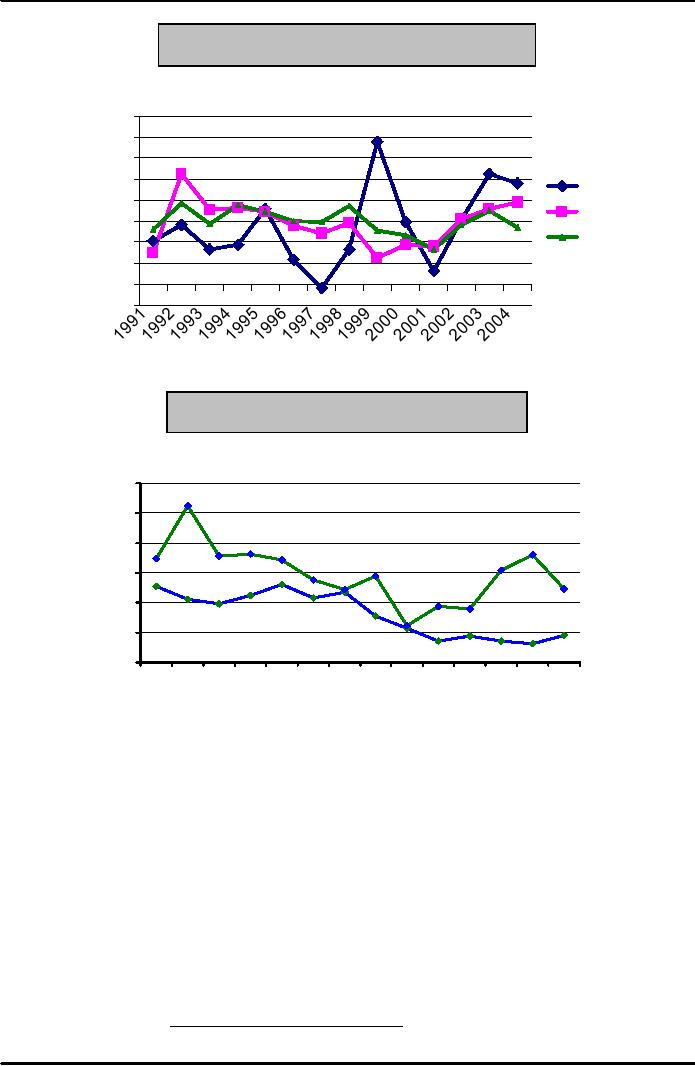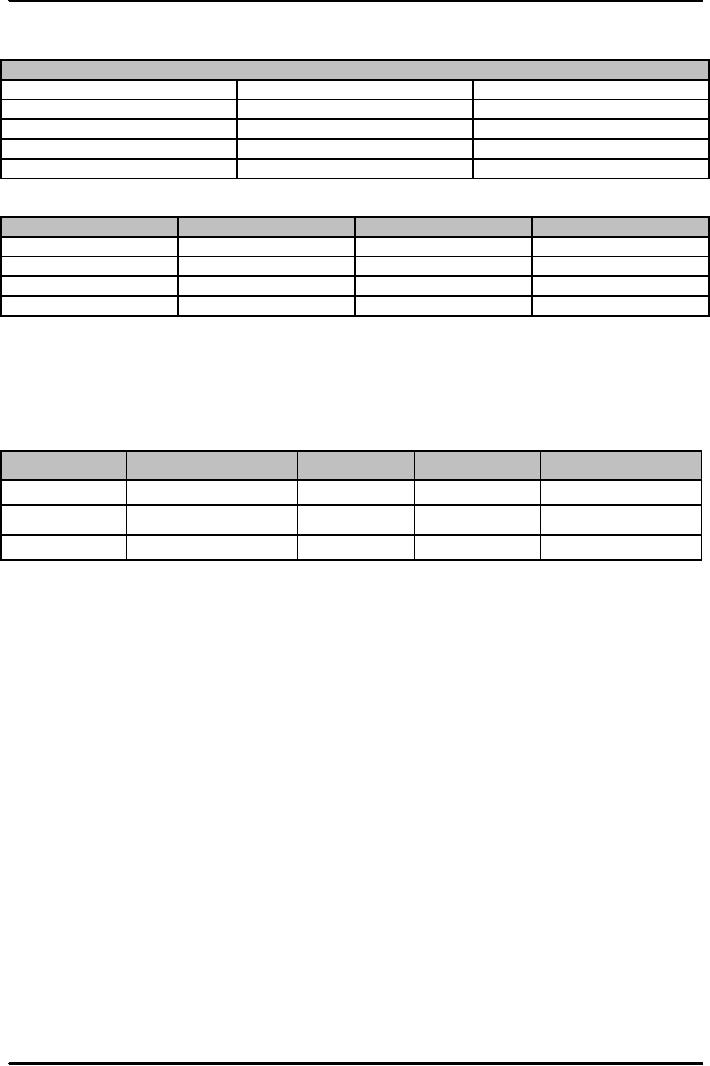 |

Money
& Banking MGT411
VU
Lesson
4
OTHER
FORMS OF PAYMENTS
Debit
Card
The
money in your account is
used for payments
Works
like a cheque and there is
usually a fee for the transaction
Credit
card
It
is a promise by a bank to lend the
cardholder money with which
to make purchases.
When
the card is used to buy
merchandise the seller receives
payment immediately
The
money that is used for
payment does not belong to
the buyer
Rather,
the bank makes the payment,
creating a loan that the
buyer must repay.
So,
they do not represent money;
rather, they represent
access to someone else's
money
Electronic
Funds Transfer
Move
funds directly from one
account to another.
Banks
use these transfers to
handle transactions among
themselves
Individuals
may be familiar with such
transfers through direct
deposit of their paycheques
and
the
payment of their utility
bills, etc
E-money
Used
for purchases on the
Internet.
You
open an account by transferring funds to
the issuer of the e-money
When
shopping online, instruct the
issuer to send your e-money to the
merchant
It
is really a form of private
money.
Stored-value
card
Retail
businesses are experimenting
with new forms of electronic
payment
Prepaid
cellular cards, Internet
scratch cards, calling cards
etc
The
Future of Money
The
time is rapidly approaching
when safe and secure systems
for payment will use
virtually no
money
at all
We
will also likely
see
Fewer
"varieties" of currency, (a sort of
standardization of money)
and
A
dramatic reduction in the number of units of
account
Money
as a store of value is clearly on the
way out as many financial
instruments have become
highly
liquid.
Measuring
Money
Different
Definitions of money based
upon degree of liquidity. Federal
Reserve System
defines
monetary
aggregates.
Changes
in the amount of money in the economy are
related to changes in interest
rates,
economic
growth, and most important,
inflation.
Inflation
is a sustained rise in the general price
level
With
inflation you need more
money to buy the same basket
of goods because it costs
more.
Inflation
makes money less
valuable
The
primary cause of inflation is the
issuance of too much
money
Because
money growth is related to
inflation we need to be able to
measure how much money
is
circulating
Money
as a means of payments
We
measure the quantity of
money as the quantity of currency in
circulation an
unrealistically
limited
measure, since there are
other ways of payments
Alternatively,
broadly categorize financial assets and
sort them by the degree of
liquidity
Sort
them by the ease with which
they can be converted into a
means of payments
Arrange
them from most liquid to
least liquid
Draw
a line and include everything on one
side of the line in the measure of the
money
9

Money
& Banking MGT411
VU
Where
to draw the line?
In
reality, we draw line at
different places and compute several
measures of money called
the
monetary
aggregates
M1,
M2, and M3
M1
is the narrowest definition of money and
includes only currency and
various deposit
accounts
on which people can write
Cheques.
Currency
in the hands of the public,
Traveler's
Cheques,
Demand
deposits and
Other
chequeable deposits
M2
includes everything that is in M1
plus assets that cannot be
used directly as a means
of
payment
and are difficult to turn
into currency
quickly,
Small-denomination
time deposits,
Money
market deposit
accounts,
Money
market mutual fund
shares
M2
is the most commonly quoted
monetary aggregate since its
movements are most
closely
related
to interest rate and economic growth.
M3
adds to M2 other assets that
are important to large
institutions
Large-denomination
time deposits,
Institutional
money market mutual fund
shares,
Repurchase
agreements and
Eurodollars
_Symbol
Assets
included
C
Currency
M1
C
+ demand deposits, travelers'
Cheques,
other
chequeable deposits
M2
M1
+ small time deposits, savings
deposits,
money
market mutual funds, money
market deposit
accounts
M3
M2
+ large time deposits,
repurchase agreements, institutional
money market
mutual
fund balances
10

Money
& Banking MGT411
VU
Monetary
Aggregates
Figures
in millions as of March
2005
1.
Currency
issued
711,997
2.
Currency
held by SBP
3,188
3.
Currency
in tills of Scheduled Banks
43,914
4.
Currency
in circulation (1 2 3)
664,895
5.
Scheduled
Banks demand deposits
93,272
6.
Other
Deposits with SBP
4,826
7.
M1
(4+5+6)
1,602,423
8.
Scheduled
Banks Time Deposits
1,037,678
9.
Resident
Foreign Currency Deposits
172,074
10.
Total
Monetary Assets (M2)
2,812,175
11.
M3
3,833,686
Source:
State Bank of
Pakistan
Table
: The Monetary
Aggregates
Monetary
Aggregates
Value
as of August 2004 (U.S.$
billion)
M1=
Currency in the hands of the
public
686.2
+
Traveler's checks
7.6
+
Demand deposits
315.3
+
Other checkable deposits
328.5
Total
M1
1,337.6
M2=M1
+
Small-denomination time
deposits
794.7
+
Savings deposits including money
market deposit
accounts
3415.3
+
Retail money market mutual
fund shares
735.5
Total
M2
6,283.1
M3=M2
+
Large-denomination time
deposits
1,036.3
+
Institutional money market
mutual fund shares
1,104.7
+
Repurchase agreements
516.6
+
Eurodollars
344.5
Total
M3
9,285.2
11

Money
& Banking MGT411
VU
Figure:
Growth rates in monetary
aggregates
40
35
30
25
M1
20
M2
15
M3
10
5
0
-5
Figure:
Money growth and
Inflation
%
30
25
20
15
10
5
0
-91
1-92 2-93 3-94 4-95 5-96 6-97 7-98
8-99 9-00 0-01 1-02 2-03
3-04
90
0
0
9
9
0
9
0
9
9
9
9
9
9
20
20
19
19
20
19
20
19
19
19
19
19
19
19
Years
Measures
of Inflation
Fixed-weight
Index - CPI
Deflator
GDP or Personal Consumption
Expenditure Deflator
Consumer
Price Index (CPI)
Measure
of the overall level of prices
used to
Track
changes in the typical household's
cost of living
Allow
comparisons of dollar figures
from different years
Survey
consumers to determine composition of the
typical consumer's "basket" of
goods.
Every
month, collect data on
prices of all items in the basket; compute
cost of basket
CPI
in any month equals
C
o s t o f b a s k e t in th a t m o n th
100
�
C
o s t o f b a s k e t in b a s e p e r io d
12

Money
& Banking MGT411
VU
Example:
The
basket contains 20 pizzas and 10
compact discs.
Prices
Years
Pizza
CDs
2002
$10
$15
2003
$11
$15
2004
$12
$16
2005
$13
$15
From
this table, we can calculate the
inflation rate as:
Years
Cost
of Basket
CPI
Inflation
rate
2002
$350
100.0
n.a.
2003
370
105.7
5.7%
2004
400
114.3
8.1%
2005
410
117.1
2.5%
GDP
Deflator
The
GDP deflator, also called
the implicit price deflator
for GDP, measures the price
of output relative
to
its price in the base year.
It reflects what's happening to the
overall level of prices in the
economy
GDP
Deflator = (Nominal GDP / Real
GDP) �100
Years
Nom.
GDP
Real
GDP
GDP
Deflator
Inflation
Rate
2001
Rs46,
200
Rs46,
200
100.0
n.a.
2002
51,400
50,000
102.8
2.8%
2003
58,300
52,000
112.1
9.1%
13
Table of Contents:
- TEXT AND REFERENCE MATERIAL & FIVE PARTS OF THE FINANCIAL SYSTEM
- FIVE CORE PRINCIPLES OF MONEY AND BANKING:Time has Value
- MONEY & THE PAYMENT SYSTEM:Distinctions among Money, Wealth, and Income
- OTHER FORMS OF PAYMENTS:Electronic Funds Transfer, E-money
- FINANCIAL INTERMEDIARIES:Indirect Finance, Financial and Economic Development
- FINANCIAL INSTRUMENTS & FINANCIAL MARKETS:Primarily Stores of Value
- FINANCIAL INSTITUTIONS:The structure of the financial industry
- TIME VALUE OF MONEY:Future Value, Present Value
- APPLICATION OF PRESENT VALUE CONCEPTS:Compound Annual Rates
- BOND PRICING & RISK:Valuing the Principal Payment, Risk
- MEASURING RISK:Variance, Standard Deviation, Value at Risk, Risk Aversion
- EVALUATING RISK:Deciding if a risk is worth taking, Sources of Risk
- BONDS & BONDS PRICING:Zero-Coupon Bonds, Fixed Payment Loans
- YIELD TO MATURIRY:Current Yield, Holding Period Returns
- SHIFTS IN EQUILIBRIUM IN THE BOND MARKET & RISK
- BONDS & SOURCES OF BOND RISK:Inflation Risk, Bond Ratings
- TAX EFFECT & TERM STRUCTURE OF INTEREST RATE:Expectations Hypothesis
- THE LIQUIDITY PREMIUM THEORY:Essential Characteristics of Common Stock
- VALUING STOCKS:Fundamental Value and the Dividend-Discount Model
- RISK AND VALUE OF STOCKS:The Theory of Efficient Markets
- ROLE OF FINANCIAL INTERMEDIARIES:Pooling Savings
- ROLE OF FINANCIAL INTERMEDIARIES (CONTINUED):Providing Liquidity
- BANKING:The Balance Sheet of Commercial Banks, Assets: Uses of Funds
- BALANCE SHEET OF COMMERCIAL BANKS:Bank Capital and Profitability
- BANK RISK:Liquidity Risk, Credit Risk, Interest-Rate Risk
- INTEREST RATE RISK:Trading Risk, Other Risks, The Globalization of Banking
- NON- DEPOSITORY INSTITUTIONS:Insurance Companies, Securities Firms
- SECURITIES FIRMS (Continued):Finance Companies, Banking Crisis
- THE GOVERNMENT SAFETY NET:Supervision and Examination
- THE GOVERNMENT'S BANK:The Bankers' Bank, Low, Stable Inflation
- LOW, STABLE INFLATION:High, Stable Real Growth
- MEETING THE CHALLENGE: CREATING A SUCCESSFUL CENTRAL BANK
- THE MONETARY BASE:Changing the Size and Composition of the Balance Sheet
- DEPOSIT CREATION IN A SINGLE BANK:Types of Reserves
- MONEY MULTIPLIER:The Quantity of Money (M) Depends on
- TARGET FEDERAL FUNDS RATE AND OPEN MARKET OPERATION
- WHY DO WE CARE ABOUT MONETARY AGGREGATES?The Facts about Velocity
- THE FACTS ABOUT VELOCITY:Money Growth + Velocity Growth = Inflation + Real Growth
- THE PORTFOLIO DEMAND FOR MONEY:Output and Inflation in the Long Run
- MONEY GROWTH, INFLATION, AND AGGREGATE DEMAND
- DERIVING THE MONETARY POLICY REACTION CURVE
- THE AGGREGATE DEMAND CURVE:Shifting the Aggregate Demand Curve
- THE AGGREGATE SUPPLY CURVE:Inflation Shocks
- EQUILIBRIUM AND THE DETERMINATION OF OUTPUT AND INFLATION
- SHIFTS IN POTENTIAL OUTPUT AND REAL BUSINESS CYCLE THEORY